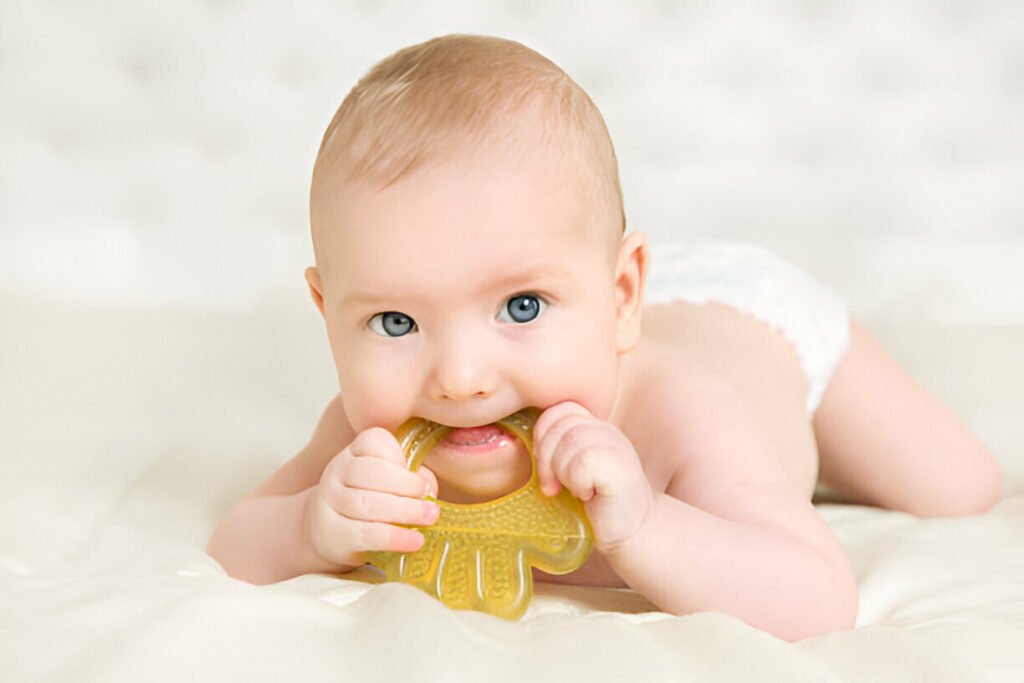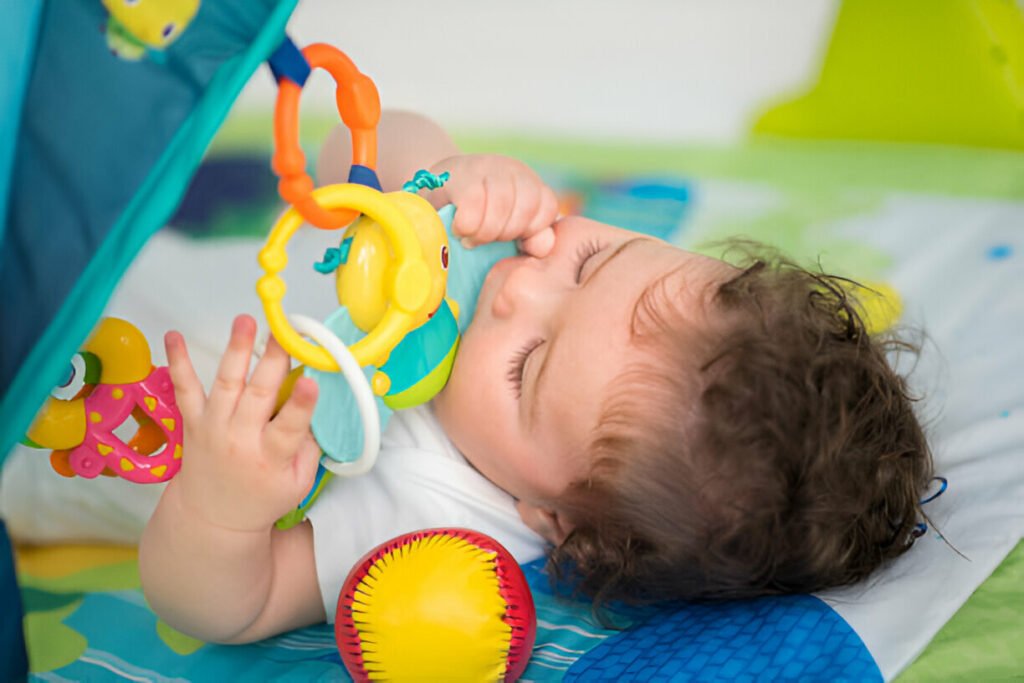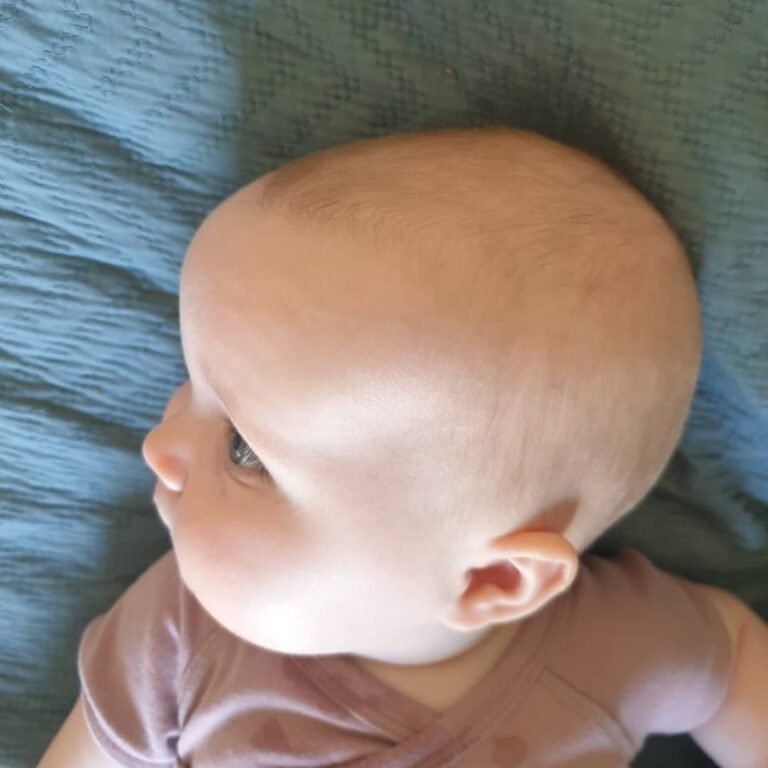When Do Babies Start Teething? A Complete Guide for Parents

Those first tiny teeth poking through your baby’s gums mark an exciting milestone. But for many parents, teething brings questions, sleepless nights, and concerns about their little one’s comfort. Understanding when babies start teething and what to expect can help you navigate this important developmental stage with confidence.
Most babies begin teething between 4 and 7 months old, though some may start as early as 3 months or as late as 12 months. By age 3, your child will typically have all 20 primary teeth. Let’s explore everything you need to know about this natural process.
The Teething Timeline: What to Expect
Stage 1: Pre-Teething (0-6 months)

During the first few months, your baby’s teeth are developing beneath the gums. You might notice increased drooling and a desire to chew on objects around 3 months, but these early signs don’t always mean teeth are coming soon.
Stage 2: First Teeth Emerge (6-8 months)
The lower central incisors (bottom front teeth) are usually the first to appear. These teeth often come through individually or as a pair. Your baby may experience more drooling, irritability, and swollen gums during this stage.
Stage 3: Upper Front Teeth (8-12 months)
The upper central incisors typically follow the bottom teeth. These can cause more noticeable discomfort since upper teeth tend to be more sensitive. Sleep disruption and fussiness are common during this period.
Stage 4: Lateral Incisors (9-16 months)
The teeth next to the central incisors appear, usually in pairs on both top and bottom. You may notice continued drooling and gum swelling. Some babies develop a low-grade fever at this stage.
Stage 5: First Molars (12-18 months)
These larger back teeth often cause significant discomfort due to their size and the pressure they create. Your baby might have trouble eating and show increased irritability.
Stage 6: Canines (16-22 months)
The pointed teeth between incisors and molars emerge next. While they may cause less discomfort than molars, fussiness and swollen gums are still common.
Stage 7: Second Molars (22-33 months)
The final primary teeth to emerge are the second molars. These can cause considerable discomfort and may lead to sleep problems, increased drooling, and slight fever.
Common Teething Symptoms
Recognizing teething symptoms helps you provide appropriate comfort and care. Look for these signs:
Physical Symptoms

- Gum soreness and redness: Areas where teeth are emerging may appear swollen and feel tender
- Increased drooling: Extra saliva helps soothe inflamed gums
- Mild fever: A slight temperature rise (under 100.4°F or 38°C) is normal
- Flushed cheeks: One or both cheeks may appear red or warm
- Facial rash: Excess drooling can cause irritation around the mouth and chin
- Ear rubbing: Pain can radiate from gums to ears
Behavioral Changes
- Irritability and restlessness: Discomfort from emerging teeth affects mood
- Gnawing and chewing: Babies seek relief by biting on objects, fingers, or toys
- Disturbed sleep: Pain and discomfort can disrupt normal sleep patterns
- Changes in appetite: Some babies eat less due to sore gums, while others prefer harder foods for relief
Soothing Teething Discomfort
Several safe methods can help ease your baby’s teething pain:

Natural Remedies
Massaging gums: Gently rub your baby’s gums with a clean finger to provide pressure relief.
Cold therapy: Offer a chilled (not frozen) teething ring or clean, damp washcloth. The cool temperature helps numb sore gums.
Firm items to chew: Sugar-free rusks or appropriate teething toys give babies something safe to gnaw on.
Cold foods: For babies eating solids, chilled pureed fruits or vegetables can provide relief.
When to Consider Medication
If natural remedies aren’t enough, acetaminophen (like Tylenol) can help manage pain. Always consult your pediatrician for proper dosing based on your baby’s age and weight. Never give medication without professional guidance.
Comfort Measures
Extra cuddles and attention help babies feel secure during uncomfortable periods. Maintaining normal routines as much as possible also provides reassurance.
What to Avoid During Teething
Certain products and practices can be harmful and should be avoided:
Dangerous Products
- Teething tablets containing belladonna: These pose serious health risks
- Gels with benzocaine: Can cause dangerous side effects in young children
- Amber teething necklaces: Present choking and strangulation hazards
- Liquid-filled teething rings: May burst and create choking risks
Unsafe Practices
- Tying teething rings around baby’s neck: Creates strangulation danger
- Giving very hard objects: Can damage delicate gums
- Using adult pain medications: Only use products specifically designed for infants
Teething vs. Illness: When to Seek Help

While teething causes discomfort, it shouldn’t make your baby seriously ill. Contact your pediatrician if you notice:
- High fever (over 100.4°F or 38°C)
- Persistent diarrhea
- Vomiting
- Severe rash
- Coughing
- Seizures
- Signs of dehydration
These symptoms suggest illness rather than normal teething and require medical attention.
Dental Care During Teething
Establishing good oral hygiene habits early sets the foundation for lifelong dental health.
Before Teeth Appear
Clean your baby’s gums with a soft, damp cloth after feeding. This removes bacteria and gets your baby used to mouth care.
Once Teeth Emerge
Start brushing as soon as the first tooth appears. Use a soft-bristled toothbrush designed for infants and a rice grain-sized amount of fluoride toothpaste.
Ongoing Care
Brush twice daily, especially before bedtime. Never put your baby to bed with a bottle, as this can cause tooth decay. Once your child turns 3, increase toothpaste to a pea-sized amount.
Professional Dental Care
Schedule your baby’s first dental visit when their first tooth appears or by their first birthday, whichever comes first. Early dental visits help:
- Ensure proper tooth development
- Identify potential problems early
- Establish healthy oral care routines
- Provide personalized guidance for your child’s needs
Creating Comfort During Teething
Teething affects the whole family, but you can minimize stress with these strategies:
Maintain Routines

Keep regular sleep and feeding schedules when possible. Consistency helps babies feel secure during uncomfortable periods.
Prepare for Disruptions
Stock up on safe teething toys and pain relief options before symptoms worsen. Having supplies ready reduces stress when your baby needs comfort.
Take Care of Yourself
Teething can be exhausting for parents too. Accept help from family and friends, and remember that this phase will pass.
Your Baby’s Teething Journey
Every baby’s teething experience is unique. Some sail through with minimal discomfort, while others need extra comfort and care. Understanding the normal teething timeline and symptoms helps you respond appropriately to your baby’s needs.
Remember that teething is a natural developmental process. With patience, proper care, and safe comfort measures, you can help your baby through this important milestone. The reward for those challenging teething days and nights is your child’s beautiful, healthy smile.
Trust your instincts as a parent. If you’re concerned about your baby’s symptoms or need guidance on managing teething discomfort, don’t hesitate to contact your pediatrician. They can provide personalized advice and ensure your baby stays healthy and comfortable throughout their teething journey.




